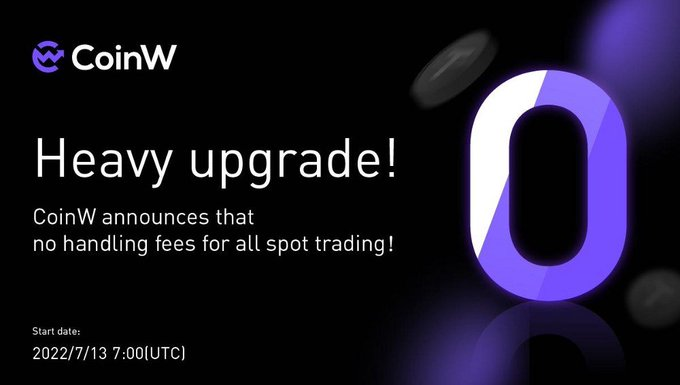XRP Price at Risk of a 25% Drop to $1.55: Here Is Why
Estimated reading time: Approximately 12 minutes
Key Takeaways
- XRP price faces a potential 25% drop to $1.55 due to a sustained four-month slump in XRP Ledger activity, highlighting the importance of on-chain metrics.
- Declining on-chain metrics (transaction volume, active addresses, etc.) signal reduced utility and adoption, eroding investor confidence and potentially leading to price depreciation.
- Cryptocurrency valuation is influenced by multiple factors beyond on-chain data, including market sentiment, macroeconomic trends, regulatory clarity (e.g., SEC vs. Ripple), competition, developer activity, and technical analysis.
- Businesses must conduct thorough due diligence on blockchain solutions, leveraging them for efficiency (payments, supply chain) while navigating financial innovation with foresight and robust risk management strategies.
- Continuous learning and adaptation to new information, especially from on-chain data and evolving regulatory shifts, are crucial for businesses and investors in the rapidly changing crypto and blockchain space.
Table of Contents
- The Foundation: Understanding On-Chain Metrics and XRP’s Utility
- Beyond the Ledger: A Holistic View of Crypto Valuation
- Connecting the Dots: Business Implications and Strategic Takeaways
- Conclusion: Mastering the Nuances of the Digital Asset Economy
- FAQ: Frequently Asked Questions
The cryptocurrency market is a dynamic landscape, where asset valuations can shift dramatically based on a complex interplay of on-chain data, market sentiment, regulatory developments, and broader macroeconomic factors. For digital asset investors, business professionals eyeing Web3 integration, and tech-forward leaders exploring blockchain’s potential, understanding these intricate dynamics is crucial. Today, we delve into a specific yet illustrative case: the analysis suggesting XRP price at risk of a 25% drop to $1.55. This projection, underpinned by a discernible slump in XRP ledger activity over recent months, offers a potent reminder of how foundational network health can influence market perceptions and price trajectory. While specific price predictions are always speculative, the underlying analytical framework—examining on-chain metrics—provides invaluable lessons for anyone navigating the digital asset space.
At its core, blockchain technology promises transparency, efficiency, and immutability. For an asset like XRP, which powers Ripple’s solutions for cross-border payments, the health and activity of its underlying ledger—the XRP Ledger (XRPL)—are paramount. A decrease in ledger activity, as observed over the past four months, signals reduced utility or adoption, potentially leading to increased downside pressure on its price. This article will unpack the implications of such on-chain metrics, explore the broader factors influencing cryptocurrency valuations, and connect these insights to actionable strategies for businesses and investors.
The Foundation: Understanding On-Chain Metrics and XRP’s Utility
To fully grasp why a slump in XRP ledger activity is a red flag, we must first understand what the XRP Ledger is and how its activity reflects its utility. The XRP Ledger is a decentralized, public blockchain designed for fast, low-cost payments. It processes transactions in seconds, settling them far quicker than traditional banking systems. XRP, the native digital asset on the XRPL, acts as a bridge currency for international transactions, enabling financial institutions and payment providers to send money across borders efficiently without the need for pre-funded Nostro/Vostro accounts.
On-chain metrics are data points extracted directly from a blockchain’s public ledger. They offer an unfiltered view of network usage and health. For the XRP Ledger, key on-chain metrics include:
- Transaction Volume: The total value of XRP transferred on the network over a given period.
- Active Addresses: The number of unique wallet addresses participating in transactions.
- New Addresses: The rate at which new users are joining the network.
- Transaction Count: The total number of transactions processed.
- Fees Paid: The aggregate fees collected by validators, indicating network demand.
When these metrics show a sustained decline, as the summary indicates for XRP over four months, it suggests a reduction in the fundamental utility and adoption of the network. For XRP, a decrease in transaction volume could mean fewer financial institutions or payment providers are using Ripple’s On-Demand Liquidity (ODL) solution, which leverages XRP to facilitate real-time cross-border settlements. A drop in active addresses might indicate reduced engagement from individual users or developers building on the XRPL.
From a market perspective, a healthy and growing blockchain network typically sees increasing on-chain activity. This suggests organic demand for the asset that fuels the network, which in turn can support or drive price appreciation. Conversely, declining activity can signal waning interest, competition from other solutions, or even underlying technical issues, all of which can erode investor confidence and lead to price depreciation. The projected 25% drop for XRP to $1.55, therefore, is presented as a direct consequence of this weakening fundamental outlook derived from its on-chain data.
Beyond the Ledger: A Holistic View of Crypto Valuation
While on-chain metrics provide crucial insights into a blockchain’s intrinsic value and usage, they are only one piece of the puzzle. The price of any cryptocurrency, including XRP, is influenced by a multitude of factors, creating a complex web of interactions that market participants must navigate. For business professionals, understanding this broader context is vital for strategic decision-making and risk management.
1. Market Sentiment and Macroeconomic Factors
The cryptocurrency market is notoriously sensitive to sentiment. News events, social media trends, and fear, uncertainty, and doubt (FUD) or “fear of missing out” (FOMO) can trigger rapid price swings. Beyond crypto-specific news, the broader macroeconomic environment plays a significant role. Inflation rates, interest rate hikes by central banks, geopolitical events, and the overall health of traditional financial markets often dictate investor appetite for risk assets like cryptocurrencies. When global liquidity tightens or economic uncertainty prevails, investors tend to de-risk, pulling capital from more speculative assets, which can negatively impact even established cryptocurrencies.
2. Regulatory Landscape
Regulation is arguably one of the most critical external forces shaping the digital asset space. For XRP, the multi-year legal battle between Ripple and the U.S. Securities and Exchange Commission (SEC) has cast a long shadow over its market performance. While partial victories for Ripple have often led to price surges, the ongoing uncertainty surrounding its classification as a security in the U.S. continues to influence institutional adoption and exchange listings. Regulatory clarity, or the lack thereof, impacts everything from market access to compliance costs and the overall perception of legitimacy for digital assets. Businesses considering blockchain integration must stay abreast of evolving regulatory frameworks globally.
3. Competition and Innovation
The blockchain industry is fiercely competitive and constantly innovating. New protocols, Layer 1 and Layer 2 solutions, and novel applications emerge regularly, often offering improved scalability, lower fees, or enhanced functionality. For XRP, this means facing competition from other payment-focused cryptocurrencies, stablecoins, central bank digital currencies (CBDCs), and even traditional fintech solutions. A slump in ledger activity could indicate that users or financial institutions are exploring alternative solutions that better meet their evolving needs or offer superior performance characteristics. Staying competitive requires continuous innovation and adapting to market demands.
4. Developer Activity and Ecosystem Growth
A vibrant developer community is a strong indicator of a blockchain project’s long-term viability. High developer activity suggests ongoing innovation, bug fixes, new features, and the creation of decentralized applications (dApps) that expand the utility of the network. For the XRP Ledger, a robust ecosystem of dApps, wallets, and services built on top of it would naturally drive increased on-chain activity. If developer interest wanes or the ecosystem fails to attract new projects, it can contribute to a decline in network usage and, consequently, price.
5. Technical Analysis
While on-chain data and fundamental analysis focus on the underlying health and utility of an asset, technical analysis (TA) examines historical price charts and trading volumes to predict future price movements. Indicators like moving averages, relative strength index (RSI), Bollinger Bands, and support/resistance levels are used by traders to identify trends, potential reversals, and optimal entry/exit points. A projected price drop to $1.55 might also be supported by technical indicators signaling a breakdown from a key support level or the formation of bearish patterns. Experienced investors often combine fundamental and technical analysis for a more comprehensive market view.
Connecting the Dots: Business Implications and Strategic Takeaways
The analysis of XRP’s potential price drop, driven by a decline in ledger activity, serves as a powerful case study for businesses operating in or considering the digital asset space. It underscores that even established projects are subject to fundamental shifts in utility and market perception. For business professionals, entrepreneurs, and tech leaders, these insights translate into several practical takeaways:
1. The Importance of Fundamental Due Diligence in Digital Transformation
Before committing resources to blockchain solutions or digital assets, thorough due diligence is paramount. This goes beyond understanding market capitalization and trading volume; it involves digging into the underlying technology, its real-world utility, and critically, its on-chain activity.
- Practical Takeaway: When evaluating blockchain platforms for digital transformation initiatives (e.g., supply chain management, data provenance, tokenized assets), scrutinize network metrics like transaction throughput, active user bases, developer engagement, and genuine economic activity. A bustling network signifies robust infrastructure and community, reducing the risk of investing in a stagnant or declining ecosystem.
2. Blockchain Solutions for Enhanced Business Efficiency
Despite potential individual asset volatility, the underlying blockchain technology offers undeniable benefits for operational optimization. The very nature of the XRP Ledger—fast, low-cost cross-border payments—exemplifies how blockchain can revolutionize traditional financial processes.
- Practical Takeaway: Businesses can leverage blockchain for increased efficiency in areas like:
- Payment Processing: Reducing transaction times and costs for international remittances or B2B payments.
- Supply Chain Transparency: Tracking goods from origin to consumer, reducing fraud and improving accountability.
- Data Management: Secure, immutable record-keeping that enhances data integrity and auditability.
- Automated Contracts: Utilizing smart contracts to automate agreements, escrow services, and compliance checks, cutting down on administrative overhead.
3. Navigating Financial Innovation with Foresight
The crypto market is a frontier of financial innovation, presenting both immense opportunities and significant risks. The XRP example highlights that even an asset with clear utility can face headwinds if its core usage declines or external factors intervene.
- Practical Takeaway: Businesses looking to engage with decentralized finance (DeFi), stablecoins, or tokenized assets must adopt a balanced approach. While the promise of new financial instruments and liquidity pools is strong, understanding the underlying tokenomics, smart contract risks, and market depth is crucial. Diversification, risk assessment, and continuous monitoring of both on-chain and off-chain market signals are essential strategies for prudent financial innovation.
4. Strategic Investment in Web3 and Digital Assets
For entrepreneurs and investors, the XRP scenario emphasizes that past performance is not indicative of future results, and even strong projects can face challenges. Investing in Web3 is not just about picking winning tokens; it’s about identifying robust ecosystems, impactful use cases, and resilient communities.
- Practical Takeaway: Rather than solely focusing on price predictions, develop a comprehensive investment thesis. Assess the long-term vision of a project, the strength of its partnerships, its ability to adapt to regulatory changes, and its technological superiority. Consider the “network effect”—how many users and developers contribute to its growth—as a key indicator of sustainable value. For businesses, this might mean investing in blockchain infrastructure, developing Web3-native applications, or integrating crypto payment gateways to stay ahead of the curve.
5. The Imperative for Continuous Learning and Adaptation
The rapid pace of change in the crypto and blockchain space demands continuous learning. What is a dominant narrative today might be obsolete tomorrow. The ability to understand and adapt to new information, especially from on-chain data and regulatory shifts, is a competitive advantage.
- Practical Takeaway: Establish internal protocols for monitoring key crypto market indicators, regulatory updates, and technological advancements. Encourage cross-functional teams to engage with blockchain education, fostering an environment where digital literacy is a core competency. This proactive approach ensures that your business can pivot quickly, seize emerging opportunities, and mitigate risks in a volatile market.
Conclusion: Mastering the Nuances of the Digital Asset Economy
The potential downside risk for XRP, stemming from a decline in ledger activity, is more than just a specific price prediction; it’s a window into the nuanced complexities of the digital asset economy. It illustrates that for all the hype, fundamental utility and measurable network engagement remain critical drivers of long-term value. For business professionals, entrepreneurs, crypto investors, and tech-forward leaders, this means moving beyond superficial headlines to embrace a data-driven, holistic approach to understanding cryptocurrencies and blockchain technology.
By dissecting on-chain metrics, considering the broader market and regulatory landscape, and continuously adapting to innovation, businesses can not only navigate the volatility but also harness the transformative power of Web3. Integrating blockchain solutions can lead to unparalleled efficiencies, unlock new financial models, and drive digital transformation across various sectors.
Are you looking to better understand the intricate dynamics of the crypto market, identify blockchain solutions tailored to your business needs, or develop a robust Web3 strategy? Our team of expert consultants specializes in guiding businesses and leaders through the complexities of this evolving landscape.
Unlock the full potential of blockchain and digital assets for your organization.
—
Explore Our Crypto Consulting Services Today!
—
FAQ: Frequently Asked Questions
Q: Why is XRP price at risk of a 25% drop?
A: The risk stems from a sustained four-month slump in XRP Ledger activity, which signals reduced utility and adoption, leading to downside pressure on its price.
Q: What are “on-chain metrics” and why are they important for XRP?
A: On-chain metrics are data points extracted directly from a blockchain’s public ledger (like transaction volume, active addresses, new addresses, transaction count, and fees paid). For XRP, they reflect the health and utility of the XRP Ledger, indicating how much the network is being used.
Q: Besides on-chain metrics, what other factors influence cryptocurrency valuations?
A: Other factors include market sentiment, broader macroeconomic conditions, the regulatory landscape (like the SEC vs. Ripple case), competition from other blockchain solutions, developer activity, and technical analysis.
Q: How can businesses leverage blockchain technology for efficiency?
A: Businesses can use blockchain for enhanced payment processing, supply chain transparency, secure data management, and automated contracts through smart contract technology.
Q: What is the significance of continuous learning in the crypto space for businesses?
A: The crypto and blockchain space changes rapidly, so continuous learning and adaptation to new information, especially from on-chain data and regulatory shifts, are crucial for competitive advantage, seizing opportunities, and mitigating risks.




